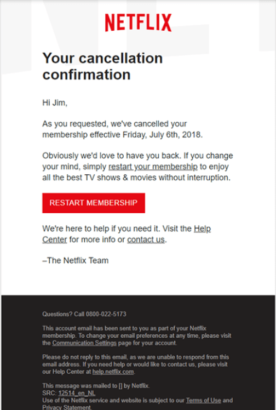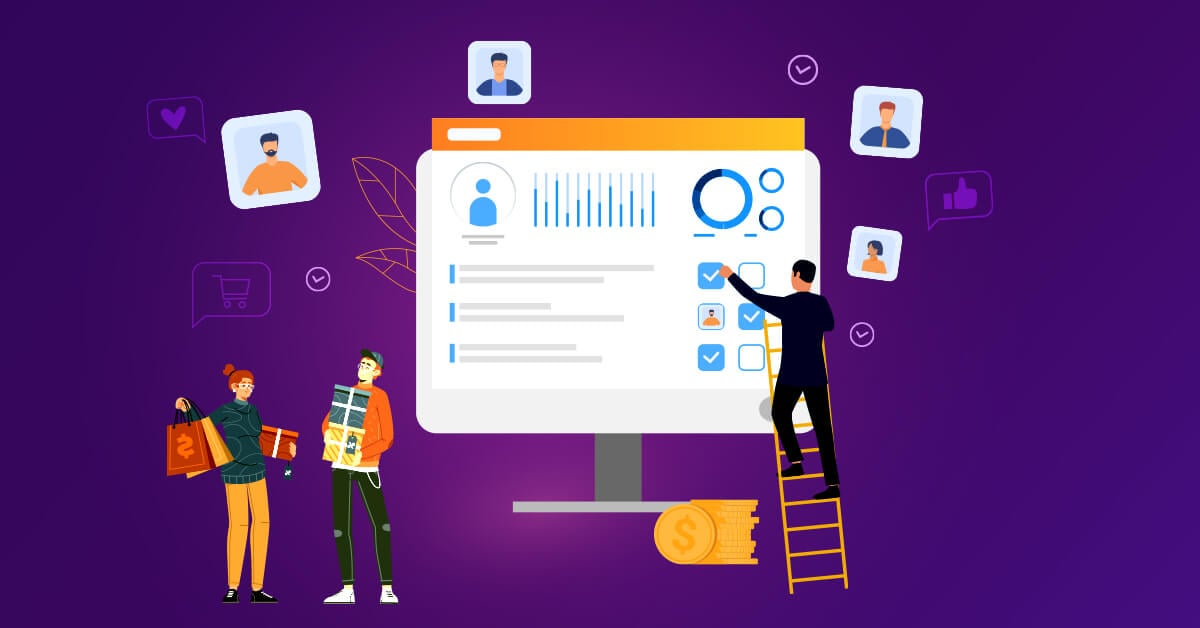Customer lifetime value is critical for all online retailers.
It’s the amount of money spent by one customer over their entire lifetime with your company. That could be one order, or it could be many orders throughout the years.
If you want to increase revenue and profits for your business, this blog post is perfect for you!
We’ll go through what customer lifetime value is, along with how to calculate it, the benefits of using CLV in e-commerce, and much more!
Let us get started with the fundamentals first!
What is Customer Lifetime Value?
Before we explore the applications of CLTV for your brand, let’s make sure we’re on the same page. Understanding what it can do for your business and what it means will be crucial in determining how you define and whether or not it’s a metric that’s possible for you to measure.
Put,
Customer lifetime value is how much money a customer will contribute to your e-commerce business throughout their association with you as a paying customer.
Customer Lifetime Value, or CLTV, tells you how much a customer is worth to your brand and gives insights into their overall value. With CLTV, you’ll better understand how much you should be investing in customer retention going forward and the profile of your ideal customer.
Why does Customer Lifetime Value matter to your e-commerce business?
Customer Lifetime Value is a critical metric in determining the health of your business and whether or not you should focus on increasing customer acquisition through marketing efforts.
A healthy CLTV indicates that customers are worth their cost to acquire them, meaning it’s more profitable for you to invest in acquiring new customers than retaining ones who have already made purchases from your brand.
That said, if your CLTV isn’t as high as it could be due to too many bad apples – those dissatisfied with what they bought or had issues with delivery times- then investing in retention might be wise because losing those good customers will hurt even more going forward. And when done right (i.e., by creating strong customer lifetime value), these tactics can make up for lost revenue more quickly than you would realize.
Moreover, the following reasons make CLTV a highly crucial metric for all businesses;
CLTV optimization is a faster way for a revenue boost
When it comes to marketing your business online, the customer lifetime value is a metric that every company should consider. For instance, if you were to retain 10% more of your existing clients, then the effect would be identical: Double revenue in one year.
Another way to optimize CLTV is: reducing your churn rate by 5% increases profitability anywhere from 25-125%. That kind of return can change your company for the better without additional acquisition costs that can be as high as 25x.
CLTV is an easy way to incentivize your best customers
In e-commerce, it is much easier to sell products to existing customers than it is for new shoppers. Returning customers are also more likely to purchase repeatedly. For instance, the probability of selling to an existing customer is 60-70% compared to just 20% for a new customer.
Marketers who know this can focus on these groups of people to drive CLTV (customer lifetime value), which will increase customer retention and revenue over time. Thus, incentivizing your repeat customers is one of the proven ways to maximize CLTV-revenue from your existing list.
CLTV is the best approach for Customer Loyalty
The Pareto Principle, which hypothesizes that 80% of your revenue comes from 20% of your customers, says a lot about why you should focus on CLTV.
When calculating your brand’s CLTV (Customer Lifetime Value), you get a better idea of which customers are worth more than others. This makes it easier to run limited-time campaigns targeting these individuals and thus increase their spending in the long term.
Segment-based targeting is extremely critical, especially considering that just a 5% increase in customer loyalty can boost your profits anywhere between 25% to 95%.
How to calculate your Customer Lifetime Value?
There are four KPIs that determine a customer’s lifetime value. These are;
- Average Order Value (AOV)
- Purchase frequency (F)
- Gross margin (GM)
- Churn rate (CR).
Each of these metrics helps to identify what factors must be addressed to maximize profit.
The formula calculates your CLTV:
CLTV = AOV*F*GM/CR
Let us now see how to calculate these different metrics given above!
Calculating AOV
AOV = Total Sales Revenue/Total Number of Orders
Calculating Purchase Frequency (F)
F = Total Number of Orders/ Total Number of Unique Customers
Calculating Gross Margin (GM)
GM = Total Sales Revenue – Cost of Goods Sold (COGS)/Total Sales Revenue
Here, COGS is calculated by;
COGS = (Beginning Inventory + Additional Purchases – Ending Inventory)
Calculating Your Churn Rate (CR)
Churn Rate = (Total Number of Customers at the end of given time period – Total Number of Customers at the beginning of time period)/ Number of Customers at the beginning of time period.
How to Optimize Your Customer Lifetime Value?
Once you’ve figured out the most important KPIs (those mentioned above), CLTV can be optimized with specific targeted campaigns.
Below are some specific customer campaigns that aim to supercharge your CLTV metric by metric.
Repeat Purchase Campaigns

Repeat purchases are the most important factor for CLTV, so it is crucial to get your target customers back into the store.
An effective way of doing this would be through reward points or point programs that incentivize returning customers with discounts and other rewards as they accumulate by buying more from you.
For instance, Rewarding customers with free shipping for repeat purchases and a discount on their second order will help create loyal customers while also upselling them on an item similar to the one they’ve purchased.
Replenishment Campaigns

If your company sells consumable or replacement products, integrate a replenishment campaign into your marketing strategy. Because more repeat customers mean more predictable revenue and profit steadily coming in from them.
By using replenishing campaigns to drive more repeat purchases, you can turn new customers into lifelong shoppers. E.g., Your replenishment campaigns can include sending your customer’s personalized coupons that they can redeem on a date of their choice!
Personalize and Automate Your E-commerce Marketing Campaigns

Start by personalizing your marketing emails with the customer’s name and email address. This is a great way to make them feel special, which can help you convert first-time shoppers into repeat customers.
Next, automate everything in your e-commerce campaigns so that they are on autopilot without you needing to do much work at all. For instance, AI-based automation tools like Wigzo can help you automate your marketing campaigns and enable omnichannel personalization for your customers to maximize conversion.
With Wigzo, you can leverage email personalization and automation, SMS, WhatsApp, On-site behavioral nudge, push notifications, exit intent, and so much more to tailor campaigns for superior results.
Conclusion
Customer lifetime value is key for e-commerce businesses. It’s also vital to automate everything in your campaigns so that they are on autopilot without you needing to do much work at all. This will ensure that no customer falls through the funnel, and you make the most of your budget with every campaign.
Your turn to skyrocketing your revenue!
Recommended reads













